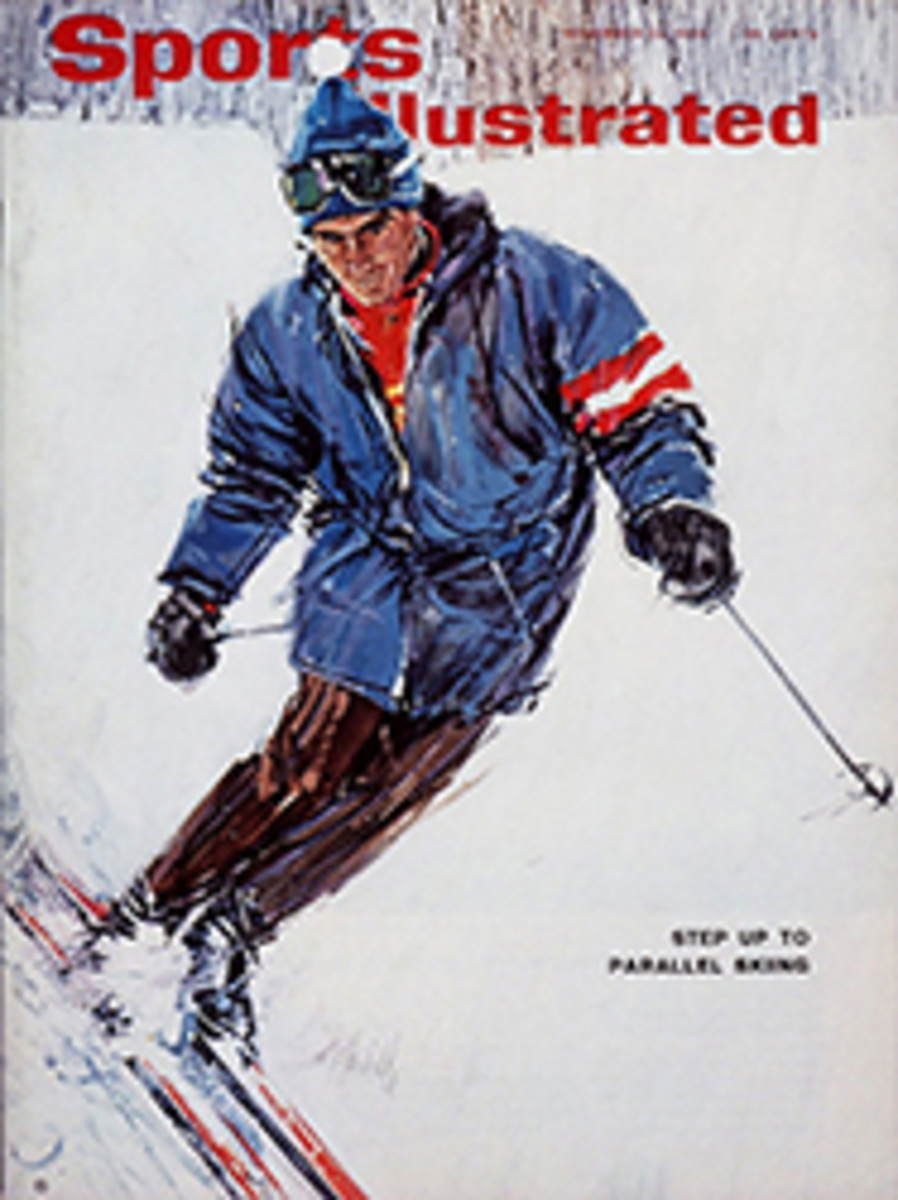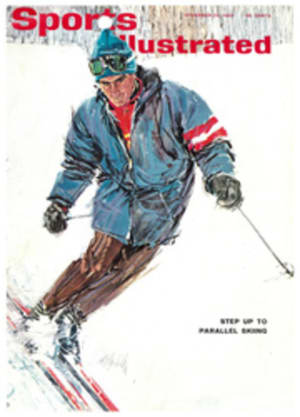
LETTER FROM THE PUBLISHER
In the 10 years of this magazine's existence the number of American skiers has doubled, rising from 2 million to the 4 million now poised for this season's rush to the slopes. Few sports have grown so explosively, and few have attracted so many Mittys with soaring thoughts of intrepid deeds. In his daydreams, the novice skier swoops magnificently down such precipitous slopes as Nosedive at Stowe, Vt. and High Rustler at Alta, Utah. In reality, he sideslips the hairier parts of trails just a little beyond his capacities and saves his flourishes for the easier sections.
But his dreams are not merely romantic nonsense. As noted in this issue (page 46), there are more good skiers today than was thought possible a decade ago. The old axiom that 90% of all skiers stop short of the expert's style of parallel skiing—and always will—no longer holds. This is true in no small part because techniques and teaching methods have improved beyond expectations.
We at SPORTS ILLUSTRATED have been fascinated by the battle of conflicting theorists for the knees, hips and shoulders of the recreational skier, and we have jumped into the fight from time to time. It was in 1957 that SPORTS ILLUSTRATED introduced a controversial new heresy from Austria as demonstrated by Willy Schaeffler, coach of Denver University's national ski champions. This system was promulgated by Austria's most influential skiing authority, Professor Stefan Kruckenhauser. It was called the shortswing, and it included the now-famous "comma" position and the so-called reverse shoulder. The shortswing skier in the traverse position pressed his knees sharply in toward the mountainside and twisted his upper body boldly downhill. This placed the body in an arc resembling a comma. Reverse shoulder meant that the skier, as he began a turn, twisted his uphill shoulder back in the direction opposite to that of the turn.
Many a winter's snow had melted since the birth of skiing's first turning technique, the Norwegian Telemark. Then, in the '20s, came the Hannes Schneider Arlberg crouch and the turn called a stem, in which the tail of one ski was brushed out, or stemmed, to begin a turn. This method also included a forceful thrust with the uphill shoulder and, indeed, the entire upper body, in the direction of the turn. That move was known as rotation.
After Schneider came France's racing skier, Emile Allais, with a style in which the skis were kept together—parallel, as they say—and the Arlberg crouch was discarded for a more upright stance. Rotation was retained. Against Allais and the vogue he enjoyed, jealous Austria countered with a modified Arlberg system, with more emphasis on parallel and a taller stance. Still rotation endured.
American skiers were rather chaotically divided among old Arlberg, new Arlberg, Allaisian and a number of personal styles different from all three when Kruckenhauser punctuated the strife with his comma. Kruckenhauser met vigorous opposition to his concept of the reverse shoulder—also called counter-rotation—and that opposition is by no means dead. But in the battle of the teaching slopes, Kruckenhauser has won. The extremes of his bodily positions have been much modified, but in most of their essentials the Austrian's theories are the heart of today's so-called American system. This takes the student from the snowplow through the still-popular stem turns and on to parallel, in which the skis behave much as they did for Allais, but the upper body, with reverse shoulder, looks sharply different.
Some aspects of American parallel are illustrated in this issue, dedicated to the proposition that skiing Mittys are not as Mittyesque as they might think. They may never make it down the new International racing trail at Vail (page 52) except supine on a ski patrolman's toboggan, but their prospects of learning to keep their skis together and skiing parallel on fairly challenging slopes are the best ever.

